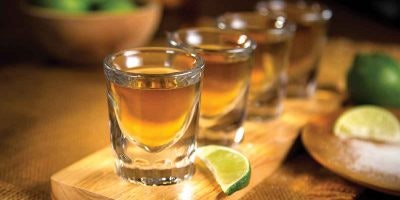The best way to truly experience the flavor of a whiskey is through tasting. However, for those who want to get an idea of what a whiskey might taste like, the whiskey label can be an excellent resource. The packaging of a whiskey often includes a wealth of information, including the location where it was produced and the type of barrel used in aging. This information can play a key role in helping you make a smart choice when it comes to your next whiskey purchase.
What is the whiskey style?
Whiskey is made all around the world, but as you would expect, not all whiskeys taste the same. There are myriad whiskey styles to choose from, each offering a different flavor profile. This is due to a combination of factors from ingredients, barrel type, and age. For example, corn is the predominant grain for bourbon while single malt is made from malted barley.

Of course, there are particular rules to follow in the making of these whiskey styles, but that’s a discussion for another day. Here are some general flavors you can expect to find in each of these whiskeys.
Bourbon
bold flavors, moderately sweet, vanilla, caramel
Rye
spicy flavors, some cherry flavors, drier style
Single Malt
rich malt and honey
Blends
lighter profile with toasted cereal and honey notes
What Barrel Types Were Used?
As you might expect, the type of barrel a whiskey gets aged in makes a huge impact on the flavor. For example, French oak offers a subtle spice and light floral notes while American oak presents vanilla, coconut and toffee flavors.

Additionally, whether the barrel is new or used and if the maker decided to toast or char the barrel will make a difference, so look for that as well. Used bourbon barrels are traditional to use in Scotch and Irish whiskeys. As a result, the flavor impact from the barrel is moderate as whiskey makers in those locations tend to use the barrels more than once.
These days whiskey makers have been defying normal production practices by experimenting with secondary barrel types to finish their whiskeys. To clarify, “finishing” refers to a whiskey being placed in secondary barrel after its initial maturation. Of course, the longer a whiskey spends in those secondary barrels, the greater the impact.
If you see these barrel names on the whiskey label, you can expect these flavors:
Sherry, port, and other wine casks
rich fruit and light nutty flavors
Rum casks
sweet notes from the molasses and tropical fruits
New, toasted or new, charred oak barrels
warm spices, vanilla, and light smoky notes
Use the flavor search tool to help guide you
One of the perks of being a Distiller Pro member is that you have access to the flavor search tool in the mobile app. What this allows you to do is set filters for specific flavors you’re looking for, like some of those listed above, and then get a list of spirits with those predominant flavors. It’s a great way to get a sense of what’s in the bottle before you spend any of your hard earned money, and it’s all based on flavor tags provided by other Distiller members who have tasted the same bottle.
Where was it made?
Not only do certain regions make certain styles of whiskey, but the environment can make a huge impact on flavor. For instance, Kentucky bourbon is made in extreme conditions with its hot summers and cold winters. Meanwhile, Northern California has a more moderate climate so bourbons made there will have lower impact from the oak than a Kentucky version of the same age.
And if you’re seeking out a peaty whisky, check the label to find the name “Islay” somewhere on the whiskey label. While peated whiskies can be made throughout Scotland (and beyond), Islay on the west coast of Scotland is the motherland. Therefore, chances are high that you’ll get those peat flavors you’re looking for with that location on the label.
How old is it?
Generally speaking, the older a whiskey is, the more complex the flavors become. With an older whiskey, the oak from the barrel will make a lasting impact on the flavor, adding depth and a longer finish. However, in a younger whiskey, the oak can still bring freshness and sweetness to the palate.
A standard age for a moderately-priced American bourbon is 4-6 years while an entry level single malt Scotch whisky is generally around 8-10 years of age. Any whiskeys older than these will offer you more dynamic flavors and a longer finish. However, past a certain age you’ll see diminishing returns on flavor and you may find the oak to be an overwhelming flavor.
See these words? Ignore them.
While phrases like “Small Batch” and “Hand Crafted” seem important, neither term has a legal definition. Therefore, how these whiskeys were made vary widely from maker to maker so it’s not a good way to determine flavor.
What is the easiest way to decode a whiskey label?
Download the Distiller app on your mobile device and upgrade to Distiller Pro to easily scan to search bottles while shopping to quickly find all the information you need about each individual whiskey bottle and more. Plus as an exclusive article discount we’re giving you a free trial month when you use code ONEFREE at checkout.
Learn the flavor profile, read reviews, add your favorites to lists and more! Download here.
With Distiller, you’ll always know what’s in the bottle before you spend a cent. Rate, Review and Discover spirits! Head on over to Distiller, or download the app for iOS and Android today!




